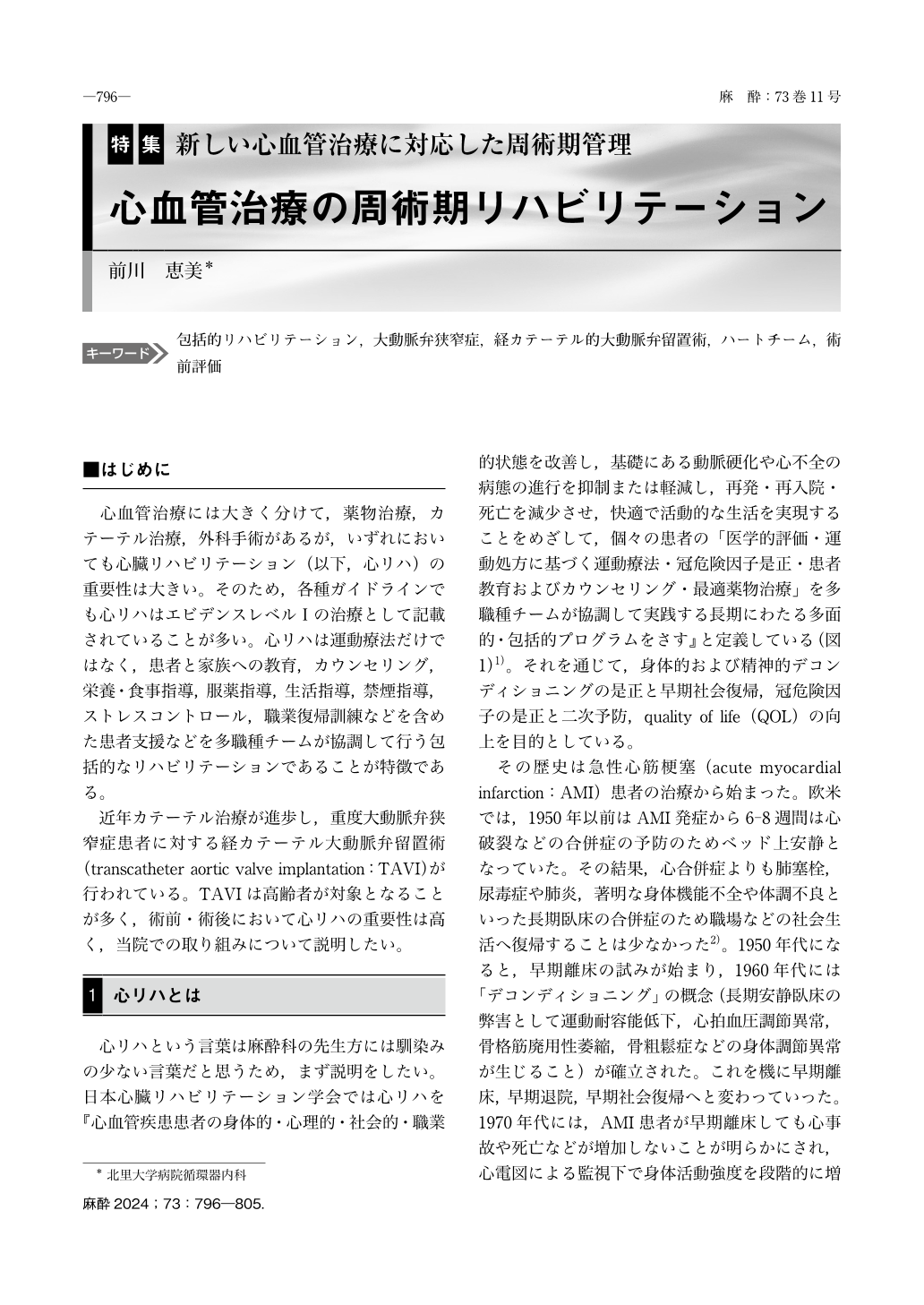Japanese
English
- 有料閲覧
- Abstract 文献概要
- 1ページ目 Look Inside
- 参考文献 Reference
はじめに
心血管治療には大きく分けて,薬物治療,カテーテル治療,外科手術があるが,いずれにおいても心臓リハビリテーション(以下,心リハ)の重要性は大きい。そのため,各種ガイドラインでも心リハはエビデンスレベルⅠの治療として記載されていることが多い。心リハは運動療法だけではなく,患者と家族への教育,カウンセリング,栄養・食事指導,服薬指導,生活指導,禁煙指導,ストレスコントロール,職業復帰訓練などを含めた患者支援などを多職種チームが協調して行う包括的なリハビリテーションであることが特徴である。
近年カテーテル治療が進歩し,重度大動脈弁狭窄症患者に対する経カテーテル大動脈弁留置術(transcatheter aortic valve implantation:TAVI)が行われている。TAVIは高齢者が対象となることが多く,術前・術後において心リハの重要性は高く,当院での取り組みについて説明したい。
There are three main types of cardiovascular treatments:pharmacological therapy, catheter intervention, and surgery. Cardiac rehabilitation(CR)plays an important role in each of these treatments. CR is characterized by a comprehensive rehabilitation approach involving a multidisciplinary team that includes exercise therapy but also provides patient support such as education and counseling for patients and their families, nutritional and dietary guidance, medication instructions, lifestyle guidance, smoking cessation support, stress management, and vocational rehabilitation training. CR is described in various guidelines as a treatment with evidence level Ⅰ. Transcatheter aortic valve implantation(TAVI)has been performed for patients with severe aortic valve stenosis. TAVI is often performed for elderly patients, making preoperative and postoperative CR critically important. The CR and TAVI provided at our hospital are described herein.

Copyright © 2024 KOKUSEIDO CO., LTD. All Rights Reserved.


